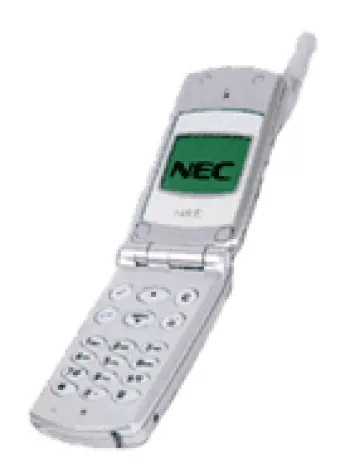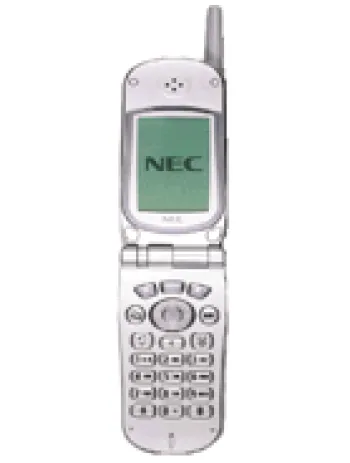
Overview and Introduction
The NEC DB5000 was a notable feature phone released in the early 2000s. Announced in 2001, the device quickly became part of the mobile communications landscape during a time when cell phones were transitioning from simple communication tools to more complex multimedia devices. The NEC DB5000 stands out as an example of the technology standards and designs prevalent in that era.
Design and Build
The NEC DB5000 featured a compact and ergonomic design, suitable for easy handling and portability. With dimensions of 90 x 46 x 23 mm and a weight of 99 grams, the device was lightweight, making it convenient for users to carry around in their pockets or bags. The body was crafted with a simplistic approach; its silver color scheme gave it a sleek and professional appearance.
Display
This phone came with a monochrome graphic display. Although the display size was relatively small by modern standards, it was quite adequate for the device's purpose during that period. The screen resolution was 97 x 59 pixels, which provided clear and sharp monochrome visuals for text and basic graphics.
Network and Connectivity
The NEC DB5000 operated on GSM technology, specifically supporting GSM 900/1800 bands. This enabled reliable voice communication and basic services over the 2G network, which was the standard in many regions during the early 2000s. However, it did not support data services like GPRS or EDGE, reflecting its primary focus on voice transmission.
Battery Life
Powered by a removable Li-Ion battery with a modest capacity of 600mAh, the phone provided substantial battery life, with up to 200 hours of standby time and around 5 hours of talk time. This endurance was suitable for the needs of users at the time, as feature phones typically demanded less power than modern smartphones.
User Interface and Software
The DB5000 was a feature phone, characterized by a straightforward and easy-to-use interface. It supported SMS messaging and included basic functionalities like a clock and an alarm. The phone lacked a web browser, Java support, and multimedia capabilities, staying true to its role as a communication device.
Memory and Storage
The NEC DB5000’s memory features were appropriate for its time, with a phonebook capacity of up to 100 contacts and the ability to store 10 dialed, 10 received, and 10 missed call records. It did not support any external memory card slots, a typical limitation of feature phones from that era.
Audio and Alerts
The phone did not include a loudspeaker or support for a 3.5mm audio jack. It featured vibration alerts and monophonic ringtones, alongside a composer for users who wanted to create custom tunes. This simplicity in sound alerts was standard for most phones of the early 2000s, prioritizing essential communication needs over entertainment.
Additional Features
Although the NEC DB5000 lacked modern smartphone features, it covered all necessary basic functionalities. It provided support in 18 languages, allowing for a broader audience reach. However, the phone didn’t come with any pre-installed games or sensors, which reflected its purpose as a straightforward communication device rather than a multifunctional gadget.
Discontinuation and Legacy
The NEC DB5000 was eventually discontinued, in line with the natural progression of technology. Despite its modest feature set, it represents a significant period in mobile history where phones were becoming more accessible and user-friendly. This device serves as a reminder of the rapid evolution in mobile technology, from simple feature phones to today's advanced smartphones.
Conclusion
In summary, the NEC DB5000 is emblematic of its time, showcasing the prevailing trends and consumer expectations during the early 2000s. Its straightforward design and functionality appealed to users looking for reliable voice communication. As technology continues to advance, devices like the NEC DB5000 remain important historical benchmarks in understanding the development of mobile communication.
Key Features of NEC DB5000
- Compact dimensions: 90 x 46 x 23 mm, making it portable and easy to carry.
- Lightweight design at 99 g, enhancing user comfort.
- Monochrome graphic display with a resolution of 97 x 59 pixels.
- Mini-SIM support for GSM 900/1800 bands.
- Phonebook capacity for up to 100 contacts.
- Call log feature allows tracking of 10 dialed, 10 received, and 10 missed calls.
- Vibration and monophonic ringtones for alert types.
- SMS messaging support.
- Practical features like clock and alarm functionality.
- Supports 18 different languages.
- Removable Li-Ion battery offering up to 200 hours of standby time and 5 hours of talk time.
- Sleek silver color finish.
Drawbacks of NEC DB5000
- No GPRS or EDGE support
- Monochrome graphic display with low resolution (97 x 59 pixels)
- No card slot for expandable memory
- No camera feature
- No loudspeaker or 3.5mm audio jack
- Lack of Bluetooth and WLAN connectivity
- No positioning feature (like GPS)
- No built-in FM Radio
- No built-in games
- No Java support for applications
View Also
More Phones
All Rights Reserved +14266 Phones © Mobilawy 2025

























